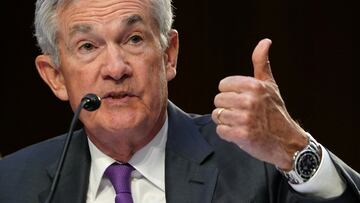How high will interest rates go up in 2023?
How will the Federal Reserve respond to slowing inflation? When will the central bank announce further rate hikes. The answers to these questions and more...


In early March, Chair of the Federal Reserve, Jerome Powell, provided his semi-annual update to Congress where he expressed a willingness on the part of the Fed to increase interest rates faster, should officials at the central bank deem the action necessary.
After Chair Powell’s remarks came the collapse of Silicon Valley Bank and a series of other bank failures that created a level of uncertainty within financial markets. In part, these bank failures were a response to higher interest rates, and later in the month, the Fed opted for a 0.25 percent increase in the Federal Funds Rate. After comments from the Chair about a faster pace of rate hikes, the quarter-percent increase was seen as cautionary, with the Fed not wanting to move too quickly given the uncertainty in financial markets. Throughout the month, the economy added 236,000 jobs, leading the national unemployment rate to fall by 0.1 percent to 3.5 percent. Now, the Bureau of Labor Statistics is reporting that average prices rose only 0.1 percent in March, down from the increases of 0.5 and 0.4 percent seen in January and February, respectively.
CPI for all items rises 0.1% in March as shelter increases https://t.co/dJyJeKlXDJ #CPI #BLSdata
— BLS-Labor Statistics (@BLS_gov) April 12, 2023
All together, these three events and data points are signs that inflation is slowing, the labor market is loosening, and some financial institutions are feeling the pressure of higher rates.
Rates will keep rising in 2023
In December, the FOMC projected that the median Federal Funds Rate (FFR) in 2023 would be 4.6 percent. This projection was revised in March, with the FOMC projecting the FRR to hoover between 5.1 and 5.6 percent in 2021. After the Federal Reserve pushed up rates twenty-five basis points in late March, they currently stand between 4.50 and 5.0 percent.
No rate increases are planned for April, but another round could come as early as 3 May. Based on the current employment and inflation reports, it seems unlikely that the Fed would ratchet up the pace at which they hike rates. Pushing rates up too high could push the economy into a recession if aggregate demand falls too low due to high unemployment.
Federal Reserve projects increases in unemployment
When it comes to businesses, increased borrowing costs or higher rates applied to their debt can lead them to lay off workers in the short term. Amazon, Meta, Twitter, and many others have announced layoffs in the tech and financial sectors as these companies begin to readjust their economic outlook. Any company debt payments increase because the interest rate applied to the principal balance rises. If more money goes to pay off debt, firms have fewer resources and may choose to freeze hiring or let people go until rates fall again.
Related stories
In March, the FOMC projected that unemployment in 2023 would range between 4.0 and 4.7 percent, which is between 0.5 to 1.2 percent higher than the current national rate. According to Senator Elizabeth Warren, who has questioned the ethics of the Fed’s actions, a one percent increase in unemployment is equivalent to two million workers being stripped from the labor market.
Sen. (D) Elizabeth Warren says about 2 million people will lose their jobs as a result of the Fed’s anticipated monetary tightening.
— Businessweek (@BW) March 7, 2023
She asked Fed Chair Powell to explain why these people must lose their jobs as part of the effort to bring down inflation https://t.co/e9TD3O8Qw3 pic.twitter.com/r4IFUuAxtN
The Fed has admitted that some groups that could be disproportionately impacted are Black and Hispanic workers, saying that the unemployment rate for these groups will “likely increase by more than the national average” as “the labor market moved into better balance.” The central bank has not clarified how a situation where workers of color are tossed out of the labor market to reduce inflationary pressure. If working-class people are the first to see their jobs eliminated and inflation remains high, the costs for some communities to stabilize prices will be much greater for some. Meanwhile, corporations across sectors are raking in record profits as millions have their jobs at these companies threatened under these monetary conditions.

